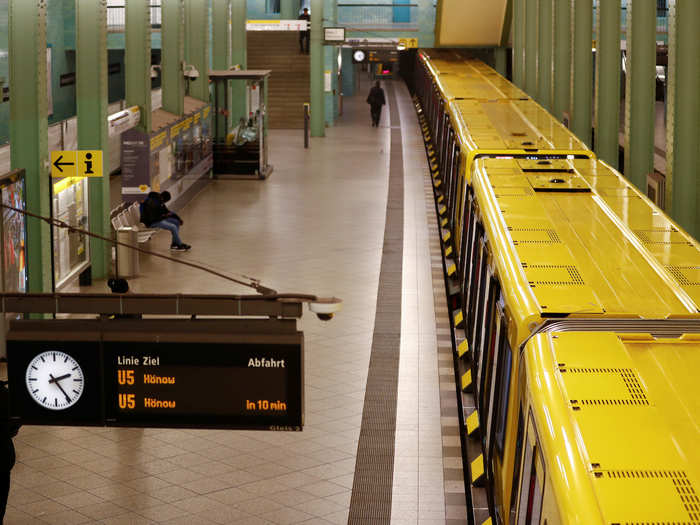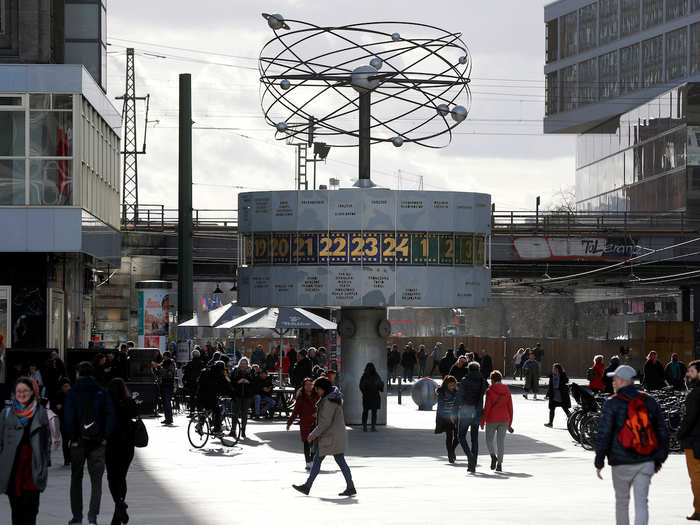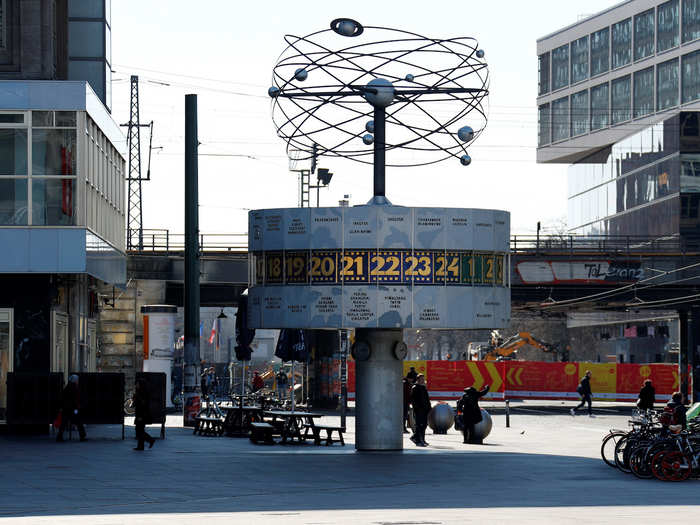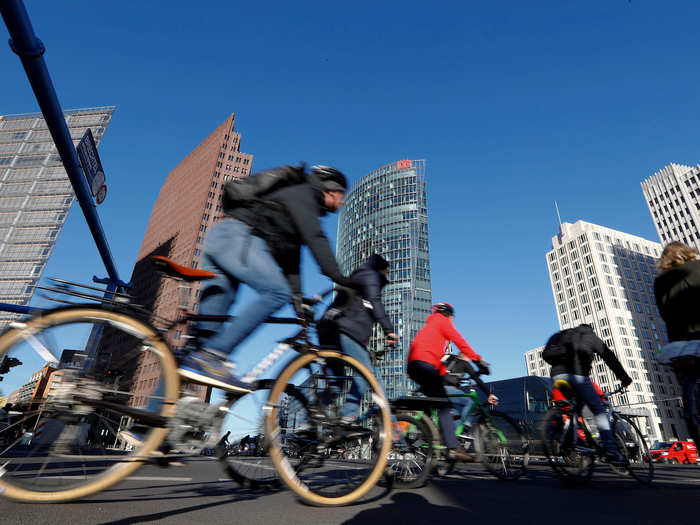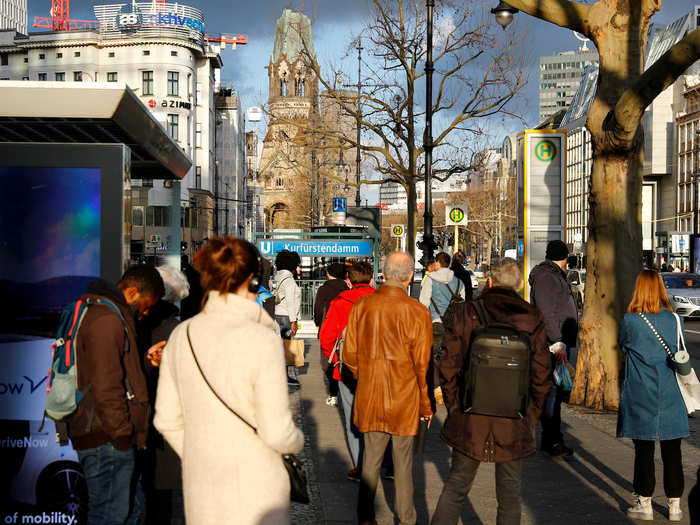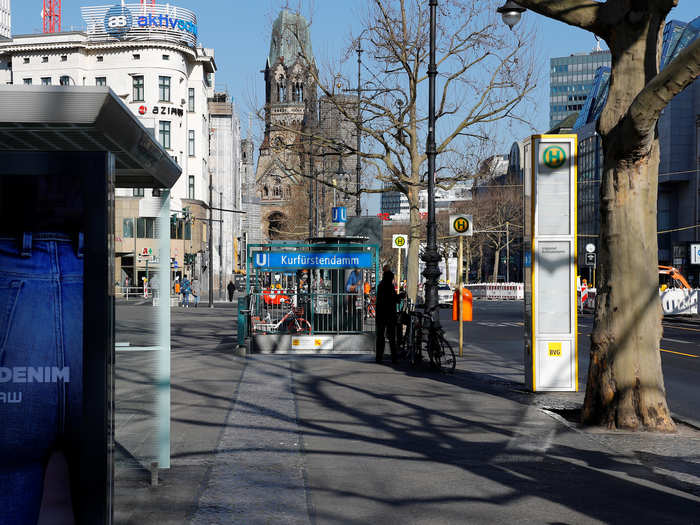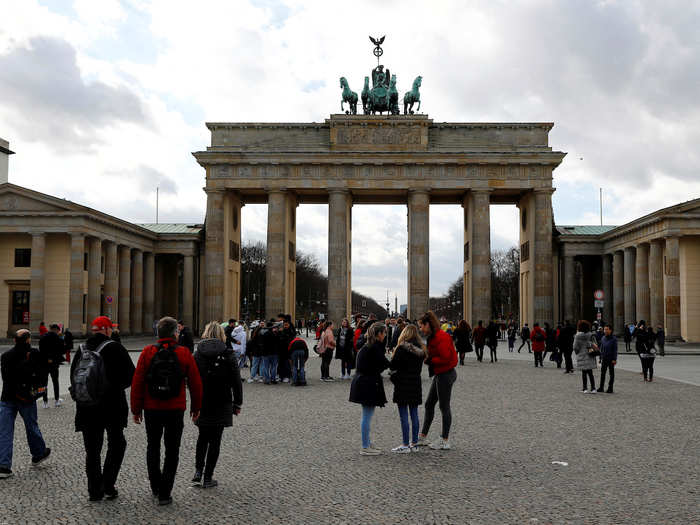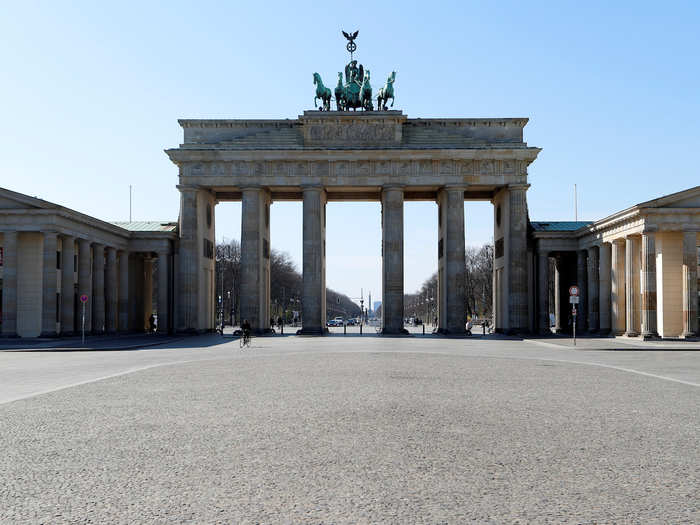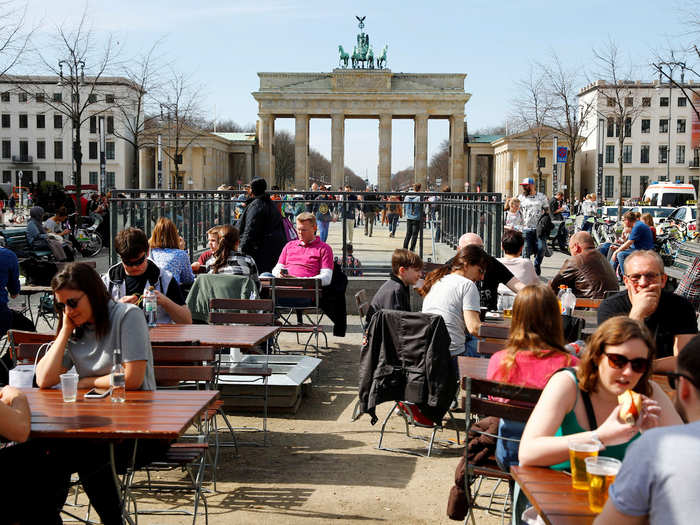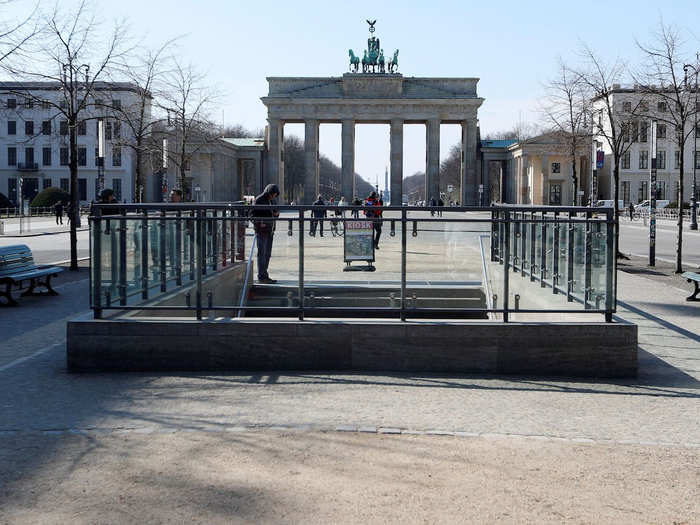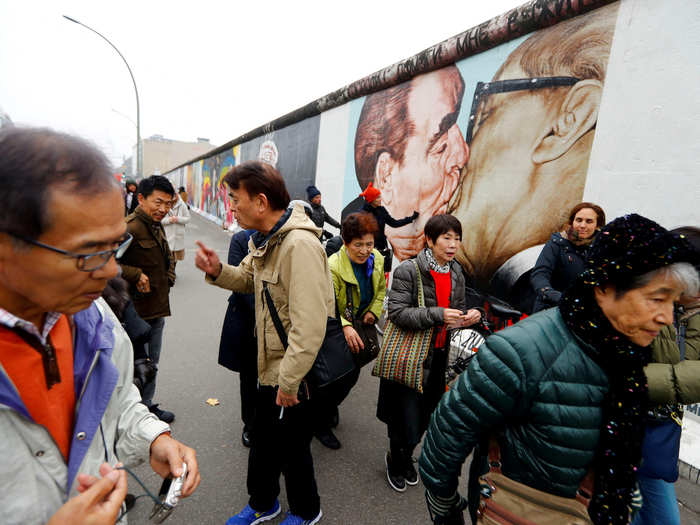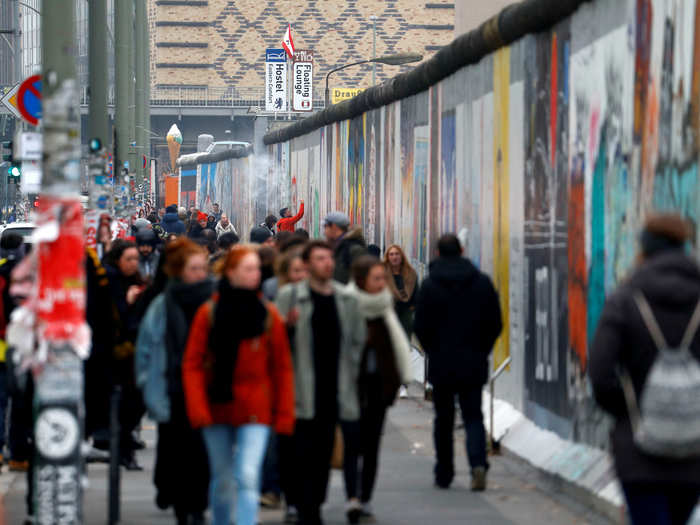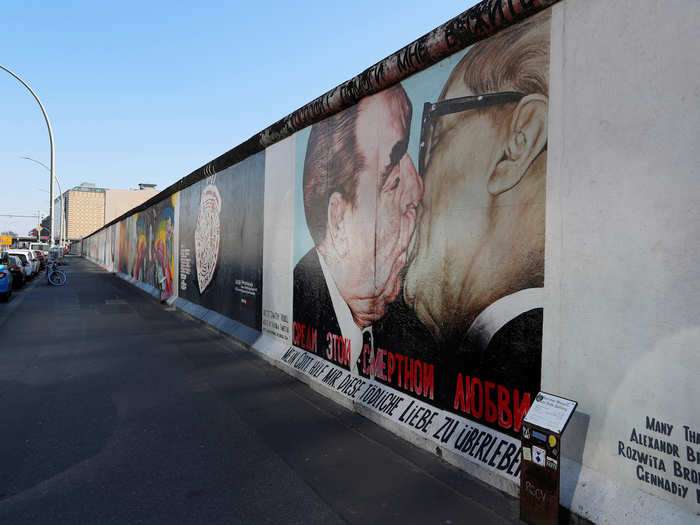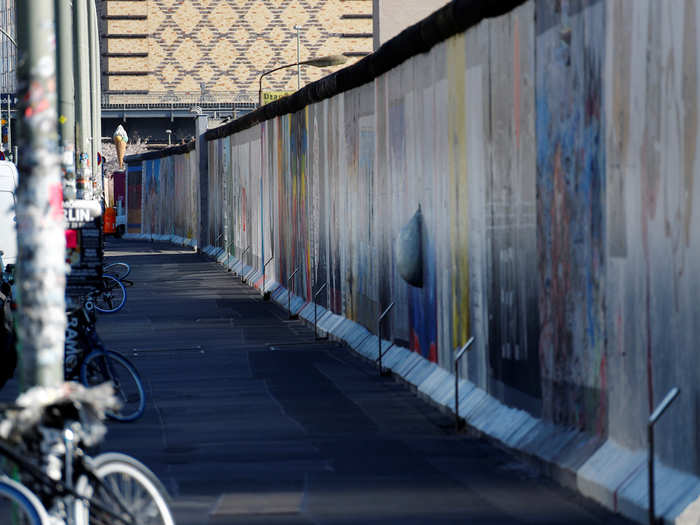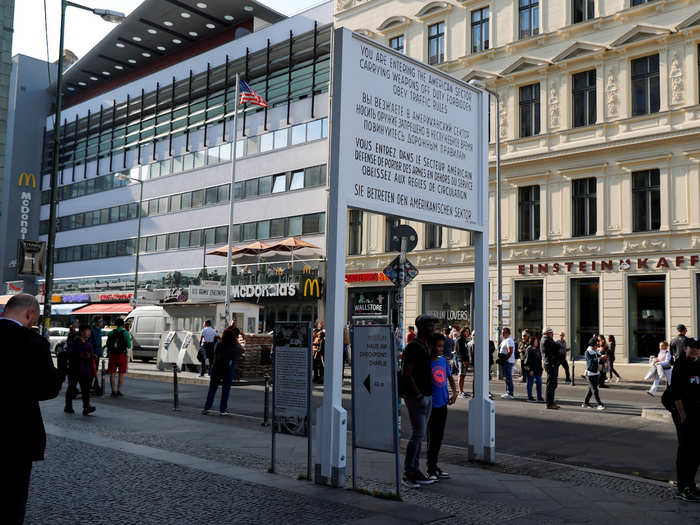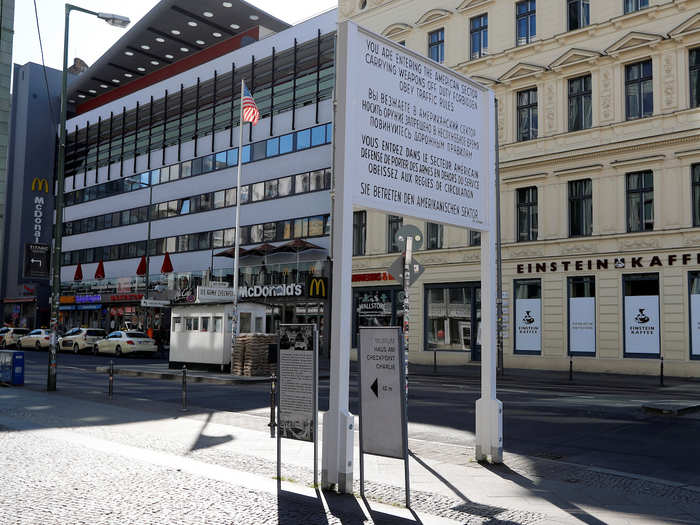BEFORE: People can be seen waiting at a bus stop on the Kurfürstendamm, Berlin's most famous shopping street, several days before non-essential shops were ordered to close.
The busy shopping street is often referred to as Berlin's version of the Champs-Élysées in Paris.
Source: Visit Berlin
AFTER: Nobody is going there now. Germany's restaurants, hotels, and other businesses are now seriously concerned. The government has pledged a massive emergency fund to save hard-hit businesses.
The government expects to run up an extra 156 billion euros ($169 billion) in debt from the fund, Deutsche Welle reported.
Companies that were in a good position by the end of 2019 are now able to apply for as much as 1 billion euros ($1.09 billion) in emergency aid, the Financial Times reported.

